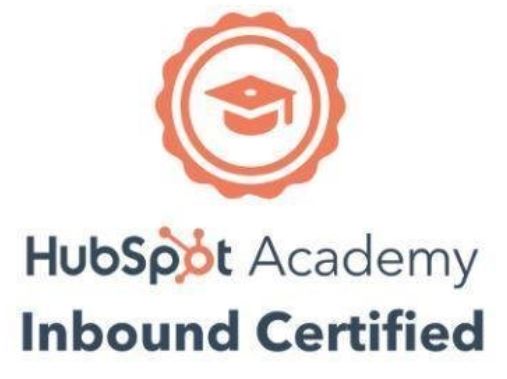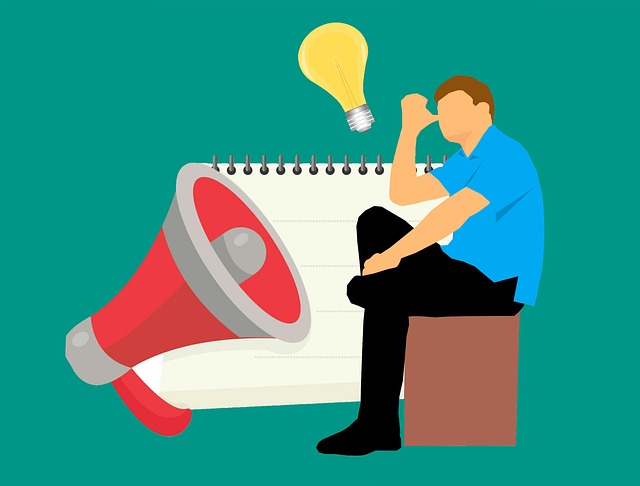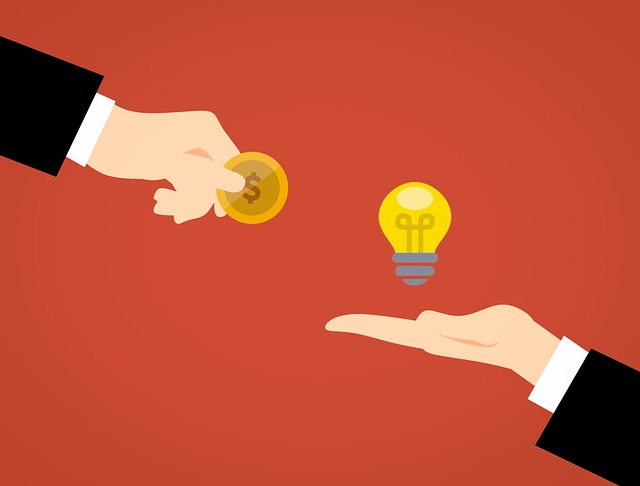The world is changing at an excruciating pace. With it, marketing and sales need to change as well. Slow but steady, companies are shifting from a company-centric approach to a customer-centric approach. The latter is called inbound marketing. For you who do not know it, Hubspot offers free courses! Here’s what I learned in a nutshell.
Inbound marketing?
Let’s start with the subject itself. What exactly is inbound marketing? Why is it so important nowadays? For that, we have to take a look at the facts.
Since the conception and introduction of this wondrous thing called ‘the internet’, the power in the market has shifted from companies to customers. With the touch of a button, people can know all about your product. In other words: cold selling doesn’t work anymore. That’s why a change of perspective is needed.
Inbound marketing is that perspective. Shortly, it means aligning with how customers think by providing value and the right content at the right time. Your strategy should be based on your buyer personas and their buyer’s journey. What are their problems that need solving? Which stage of their buyer’s journey are they in? When you can answer these questions, you can start developing your inbound strategy.
This approach consists of 4 phases:
- Attract: lure visitors to your website by providing relevant, personalized and helpful content
- Convert: stimulate visitors to take a desired action
- Close: what after the conversion?
- Delight: turn customers into loyal advocates
Let’s take a closer look at these phases and how they should be executed.
Attract visitors to your website
Consumers visit sites for specific reasons. Lure them by offering them a solution to their problem. Provide relevant and interesting content at the right time.
Content is defined by:
- Purpose: educate and create value before asking for money or contact information
- Format: which kind is best suited for your buyer personas? Is it video? A blogpost?
- Topic: which topic will attract visitors?
Remember that every piece of content is a doorway to your site. It’s not about the amount, but about the architecture, quality and authority it posesses.
Convert your visitors
Conversion is a moment when website visitors take a desired action. This could be visiting a certain page, submitting a contact form, chatting,…
The key to converting is the conversion process. This is the way you offer a visitor the opportunity to become a lead. Provide a clear site structure with easy navigation and plenty of call-to-actions. There will however always be room for improvement. So how can you maximize conversions? Conversion rate optimization is the answer.
Conversion rate optimization (= CRO)
CRO is a system for increasing the percentage of visitors to a website that convert into customers or take a desired action. This iterative process consists of 2 phases:
- Conduct research on your existing website visitors and their experience
- Who are they
- Where did they come from?
- What makes them (not) take a desired action?
- Mitigate the impediments you discovered in phase 1
As said, this process is a circle. When you have discovered impediments and adapted your site to them, it’s time to revaluate those changes. Here are some strategies to optimize your conversion!
- Run tests on landing pages (A/B testing of copy, content, image, forms, design,…)
- Create CTA’s within your blog posts. CTA buttons are often provided at the end of a post. Many readers don’t get that far and might miss out on your offer.
- Include lead flows on your blogs, like high-converting pop-ups offering great value
- Add chat
- Leverage retargeting
Close a customer
After a visitor takes a desired action, it’s time to close the deal. This phase consists of 4 parts:
- Identify: who can you help?
- Connect with them after you have found a means to contact them (after submitting a contact form for example)
- Explore the lead’s goals and challenges to help them assess whether or not your offer is a good fit for their context.
- Advise: why is your offer uniquely positioned for their goals and challenges?
Your top priority during this phase is offering a relevant and personal experience to your visitors. When you offer enough value, it’s time to close the deal.
Delight and create loyal advocates
Inbound marketing doesn’t end with closing. You’ll need to delight customers to turn them into promotors. We all know that today, word-of-mouth communication is worth much more than any form of paid advertising. And if acquiring a new customer can be up to 25x more expensive than retaining an existing one, you’d rather keep your current customer base, right? But how is it done?
Simply keep providing solutions to your customers. Keep adding value and make your customers successful with your solutions. They will buy more and forgive you more easily. They might even become promotors to your brand, which is the culmination of inbound marketing.
But you can only help your customers grow if you understand them, their needs and their challenges. Empathy is key. Listen to the Voice of the Customer. This means sharing customer feedback within your organization to align departments and achieve success. This will help you:
- Increase retention
- Serve customers
- Innovate to better meet customer needs
- Evaluate your company’s way of working
Of course, not everyone will be positive about your company. There will always be negative feedback and customers leaving. It’s important to give these people a positive way out. If you don’t, they might become detractors, denouncing your brand to their friends and colleagues.
Are you inbound yet?
As you can see, your customers are the most vital part of your company. Without them, you will cease to grow and eventually cease to exist. If your company’s already inbound, good job! If not, note that company-centric businesses are a dying race. You don’t want to become a marketing dinosaur! Anyway, I strongly advise Hubspot’s inbound certification course. It takes a while to watch all the videos, but they’re worth it!




